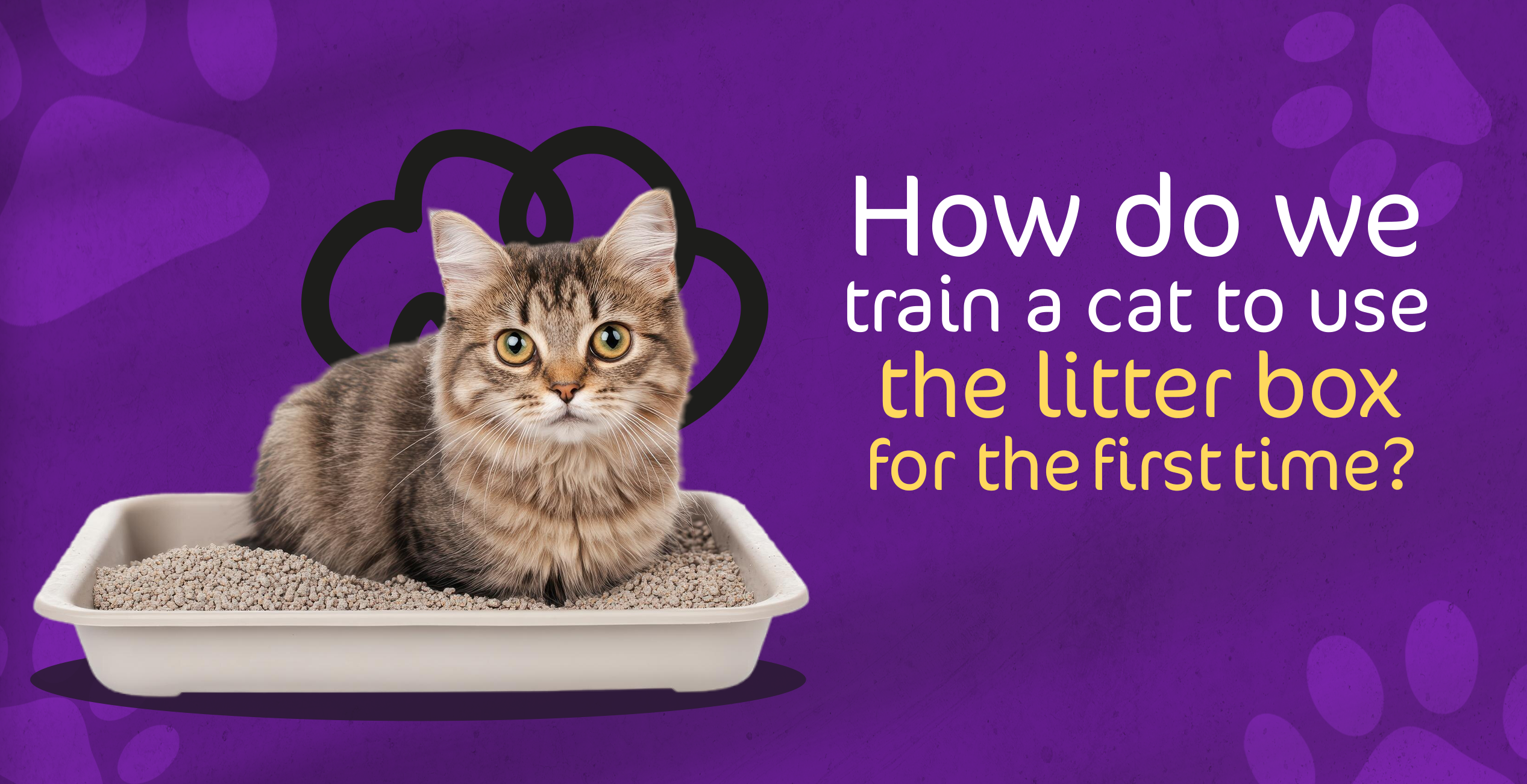
31 Aug How do we train a cat to use the litter box for the first time?
Raising cats is fun, but like we say with everything, you need to be prepared and know how to handle them properly. One of the most important things to take care of when you bring a new cat home is training it using the litter box. This makes your life easier and keeps the house clean and organized. In this article, we’ll explain how to train your cat using the litter box for the first time simply and easily. We’ll also show you how to choose the right litter box from the Pet City online store, which offers a variety of options to suit all needs.
Training cats to use the litter box should start with understanding how cats think when they need to relieve themselves or use the litter box.
Cats in the wild will do their business anywhere and under any conditions, but when raising cats indoors, you need to provide an environment that suits their needs without disrupting the household or bothering the people living there.
It’s important to know that it’s quite natural for a cat to do its business anywhere in the house during the first few days of being brought home, even if it has been trained to use the litter box.
Cats are naturally shy and need some time to get used to a new environment. That’s why training them to use the litter box requires patience and a good understanding of their behavior.
The key to Training kittens to use the litter box is understanding their basic needs. If you know when your cat needs to urinate or defecate, you won’t have any trouble training it, and the process will be simple and stress-free.
How to Know When Your Cat Needs to Urinate or Defecate
The signs that indicate a cat needs to urinate or defecate are well-known among cat owners. Cats usually need to relieve themselves after waking up from sleep or after eating. These signs include:
- Sudden and restless movement: These are movements the cat might not normally do. If you see your cat moving anxiously as if searching for something, be aware that it might be looking for a place to relieve itself.
- Heading towards corners of the house and sniffing intently: Cats rely heavily on their sense of smell, and when they do this, they’re usually looking for traces of urine or feces around the house. If you see your cat doing this, it might be searching for a place to go to the bathroom.
- The most common sign is that the cat starts digging randomly in any spot, such as on a carpet, a sofa, or bed pillows.
If you notice these signs, take your cat to the litter box immediately.
Steps to Train Your Cat to Use the Litter Box
Step 1: Choosing the Right Litter Box
The first step is to choose a litter box that suits your cat. There are many types available at the Pet City online store, such as open litter boxes (litter box standard), closed litter boxes ( Cat Litter Box Semi-enclosed Deodorant and Splash – XL ), and self-cleaning litter boxes ( litter box 2 levels local). Choose a litter box that’s the right size for your cat and easy for it to get in and out of. If your cat is a kitten, pick a litter box with low edges so it can easily enter.
Step 2: Choosing the Right Litter
Cats naturally love to dig and bury their waste, so choosing the right type of litter is crucial. There are different types of litter, clumping litter such as ( My-Cat Bentonite Cat Litter 10kg ), ( Premium Bentonite clumping cat litter OCEAN FRESH 10L ), and non-clumping litter such as (premium cat litter pellets lavender 15L), ( Bernard Cat litter pine pellets 5L lemon ), which are also available at Pet City online.
Clumping cat litter consists of grains that clump together when wet, making it easier to clean as waste forms into clumps. Non-clumping cat litter has separate grains that don’t clump, making it suitable for cats with dust allergies. Clumping litter is known for its quick odor absorption, while non-clumping litter is cheaper and more readily available. Ultimately, the choice depends on the cat’s needs and the owner’s budget.
Step 3: Setting the Litter Box in the Right Place
Choose a quiet and non-distracting place for the litter box, far from where your cat eats and drinks. It’s best if the location is easily accessible but not in a high-traffic area of the house. The right spot will make your cat feel safe and comfortable when using the litter box.
Step 4: Introducing Your Cat to the Litter Box
When you bring your cat home for the first time, take it to the litter box and let it explore. If it’s still a kitten, you can gently place it inside so it gets used to the feel of the litter and starts associating the litter box with relieving itself. Try doing this several times a day, especially after meals or when the cat wakes up.
Step 5: Encouragement and Rewards
When you notice your cat using the litter box, encourage it with kind words or a small treat. Positive reinforcement will motivate your cat to repeat this behavior. Avoid punishment or raising your voice if it relieves itself outside the litter box, as this could scare the cat and make it avoid using the box.
Step 6: Maintaining the Cleanliness of the Litter Box
Cats love cleanliness, so it’s essential to keep the litter box clean regularly. Remove clumps daily and wash the litter box periodically. This will ensure your cat always uses the litter box without any problems.
Training cats to use the litter box for the first time requires a bit of patience and understanding of the nature of cats. If you follow these steps, you’ll find that your cat quickly adapts and feels comfortable using the litter box. Always make sure to provide the right litter box from the Pet City online store, which offers a variety of litter boxes and litter so you can choose the best for your cat, ensuring ongoing comfort and cleanliness.



Sorry, the comment form is closed at this time.